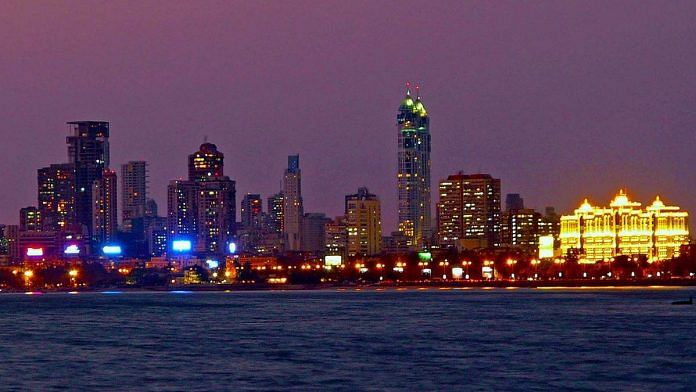Mumbai: As part of its goal to make Maharashtra a trillion-dollar economy, the Eknath Shinde-led state government is aiming to make the Mumbai Metropolitan Region (MMR), comprising the city and its satellite settlements, an economy of $250 billion in the next five years.
The Mumbai Metropolitan Region Development Authority (MMRDA) — the government agency in charge of developing the Mumbai Metropolitan Region — has issued bids to prepare a detailed project proposal to boost the economy of the area, S.V.R Srinivas, the authority’s commissioner, told ThePrint. The aim is to harness the benefits of major transport infrastructure projects underway that promise to bring Mumbai’s satellite towns closer to the island city.
“India is looking at a target of a $5 trillion economy. Maharashtra is looking at a target of a $1 trillion economy, and a major portion will come from the MMR. This region can either pull down or boost the state’s aggregate,” Srinivas said.
According to the MMRDA’s bid documents, the Gross Domestic Product (GDP) of the MMR region currently stands at about $140 billion. Its per capita GDP of $4,500 is nearly double that of Maharashtra, or indeed that of India.
According to MMRDA’s estimates, MMR accounts for about a third of Maharashtra’s GDP and Maharashtra contributes to about 10 per cent of the national GDP.
Also Read: India’s road infrastructure beginning to look impressive. But it’s a long way from world-class
‘Infra projects major opportunity for MMR’
The 6,328 sq-km MMR comprises nine municipal corporations, nine municipal councils, one nagar panchayat, and more than a thousand villages, according to the MMRDA. It has a population of 2.35 crore, per the 2011 Census.
Srinivas said that so far, a majority of the GDP for MMR has been coming from Mumbai. “But, with major transport infrastructure projects, especially the Sewri-Nhava Sheva Mumbai Trans Harbour Link, underway, it is a great opportunity for the overall region to position itself as a key hub of economic activity,” he said.
“It will open up the mainland for development opportunities, and the advantages will accrue to everyone. But, the thought is that we should be prepared to use the advantages for doing more for the public. It’s not only for pushing up MMR’s GDP but also for pushing up the share of the public in the GDP,” he added.
The 22 km Sewri-Nhava Sheva trans-harbour link, which is likely to be opened for operations by December this year, is touted to be the country’s longest sea link, reducing the distance between the island city of Mumbai and the mainland to just a few minutes. Besides, the under-construction Navi Mumbai International Airport is also likely to boost development in MMR towns around the airport site. The harbour link will be a key connector to the airport.
The MMRDA is also planning to construct a 126-km Multi-Modal Corridor from Virar to Alibaug that will connect almost every important town in MMR. There are also plans for a bunch of metro rail lines to boost connectivity within MMR and the connectivity of Mumbai’s satellite towns with the city.
Srinivas said the MMRDA wants to build growth centres close to these key transportation corridors and having a roadmap to plan ahead will help. Hence, the call for proposals from consultants.
Roadmap for $250 billion economy
The MMRDA plans to begin by poring over the models of at least five global case studies where cities have transformed themselves successfully to have stable economies, affordable public transport, economical real estate, good quality basic social and health infrastructure, and strong sources of project development financing.
The development authority also wants to devise a strategy to attract more foreign direct investment in MMR with the aim of making the urban agglomeration the top destination for foreign investments.
The MMR already has industrial and logistics hubs such as Thane, Bhiwandi, and Taloja, which will all eventually be better connected with each other and with Mumbai once all infrastructure projects in the works are completed.
Srinivas said the idea is to focus on connecting three key components spread out across MMR — labour markets, commodity markets, and raw material.
The consultants are also required to develop customisable plans and scenario analyses for more than a thousand global companies looking to establish their base in India and MMR, according to the MMRDA’s bid documents.
(Edited by Uttara Ramaswamy)
Also Read: How India’s longest sea link is taking shape in Mumbai one span at a time & notching many firsts



